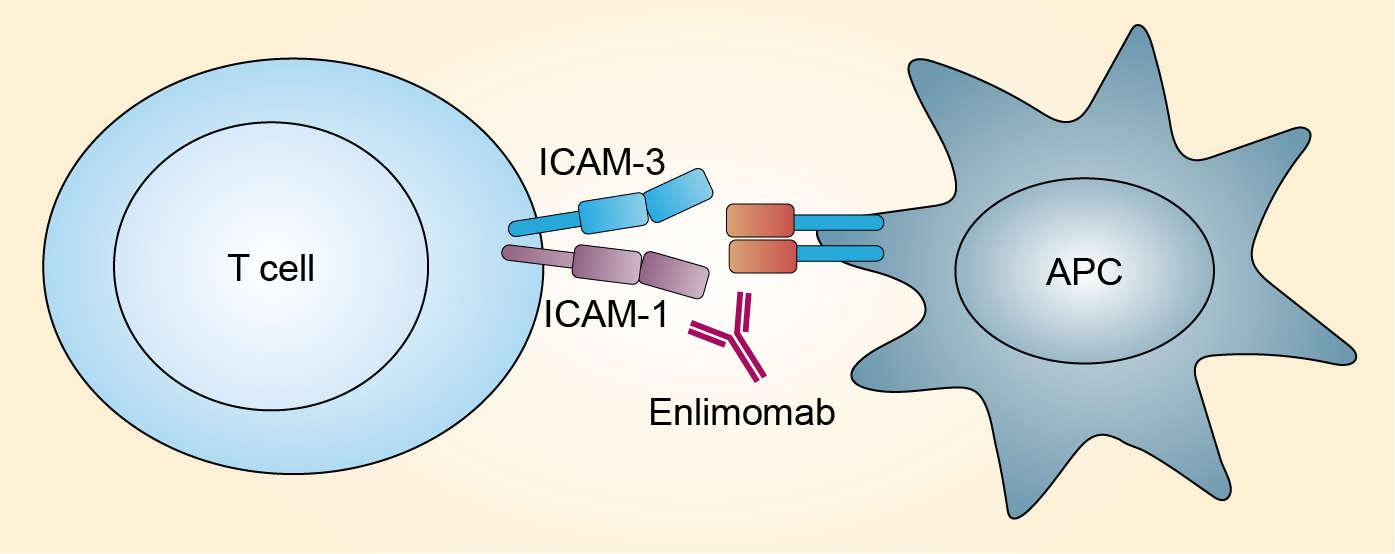Enlimomab Overview
Introduction of Enlimomab
Enlimomab (BIRR-1, R6.5), a murine IgG2a monoclonal antibody (mAb) to the human intercellular adhesion molecule 1 (ICAM-1, also known as CD54), inhibits leukocyte adhesion to the vascular endothelium, thereby decreasing leukocyte extravasation and inflammatory tissue injury. In initial clinical trials, enlimomab proved to be beneficial in reducing both disease activity in refractory rheumatoid arthritis and the incidence of acute rejection after kidney and liver allograft transplantations. However, adverse effects such as fever, leukopenia, or cutaneous reactions were not infrequent. Enlimomab’ activating resting neutrophils in a complement-dependent manner in whole blood was considered to be associated to the side effects.
Mechanism of Action of Enlimomab
Emigration of peripheral blood leukocytes into sites of infection and inflammation plays an important role in host defense against both microbial invasion and the development of inflammatory tissue injury. Leukocyte extravasation occurs in consecutive steps. The initial step, tethering to and subsequent rolling on the activated endothelium, is mediated by selectins. The ensuing firm adhesion is mediated by β2 integrins, particularly by CD11a/CD18 (LFA-1, αLβ2) on lymphocytes and CD11b/CD18 (Mac-1, CR3, αMβ2) on neutrophils. The arrest requires leukocyte activation by agonists such as platelet-activating factor and inflammatory chemokines released at the area of endothelium. Upon activation, neutrophil CD11b/CD18 expression increases, L-selectin (CD62L) expression decreases, and the cell becomes primed in terms of oxidative burst activity. In addition, CD11b/CD18 heterodimers become activated.
ICAM-1, a member of the Ig superfamily, is composed of five extracellular Ig-like domains, a transmembrane spanning region, and a cytoplasmic tail. It is constitutively expressed at low levels on a variety of cell types, including neutrophils. In vivo, tissue expression of ICAM-1 is markedly elevated at sites of inflammation. In vitro, ICAM-1 expression is increased on endothelial cells as well as on many other cell types when they are co-incubated with inflammatory cytokines such as IFN-γ, IL-1, and TNF-α. ICAM-1 function-blocking mAbs inhibit leukocyte endothelial adhesion in vitro and in vivo and depress immune response.
Enlimomab is a murine IgG2a mAb directed against extracellular domain 2 of the ICAM-1 molecule. It attenuates T cell and neutrophil emigration and tissue effector functions by blocking their adhesion to the vascular endothelium. As the first murine anti-ICAM-1 mAb administered to humans as an anti-inflammatory agent, enlimomab proved to be beneficial in depressing disease activity in patients with refractory rheumatoid arthritis.
 Fig.1 Mechanism of action of enlimomab
Fig.1 Mechanism of action of enlimomab
For research use only. Not intended for any clinical use.
This site is protected by reCAPTCHA and the Google Privacy Policy and Terms of Service apply.



